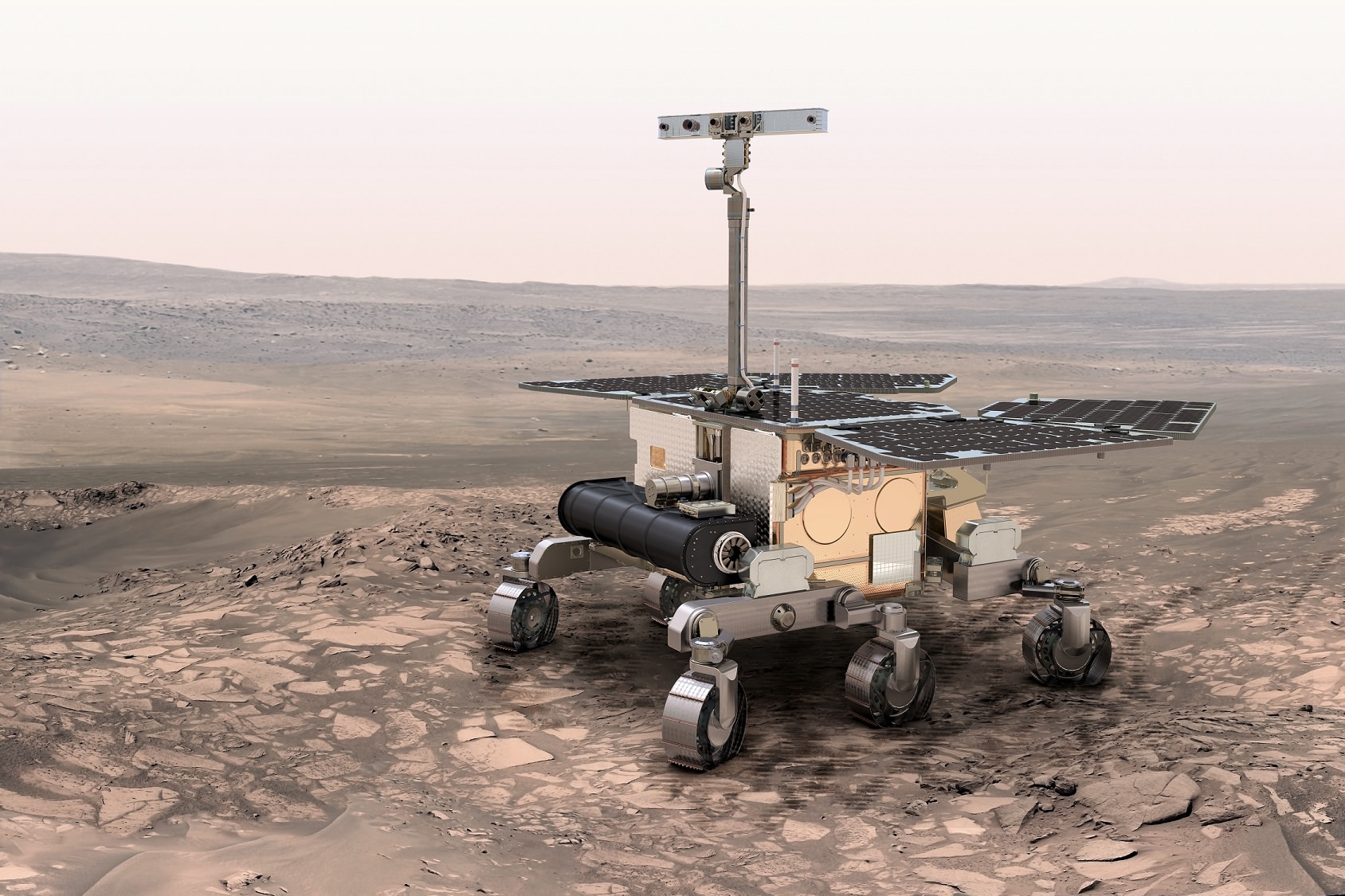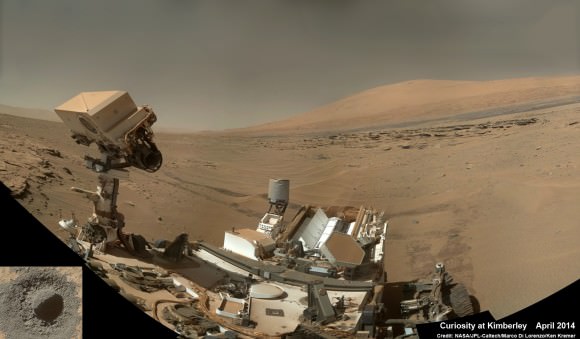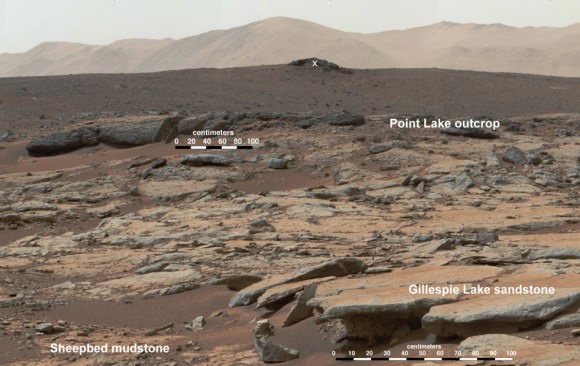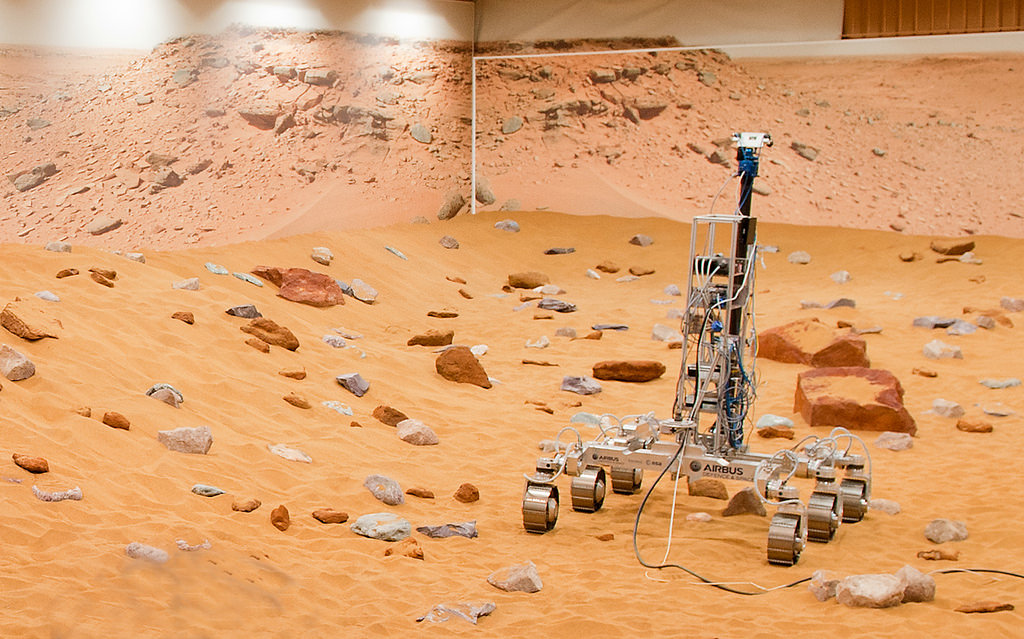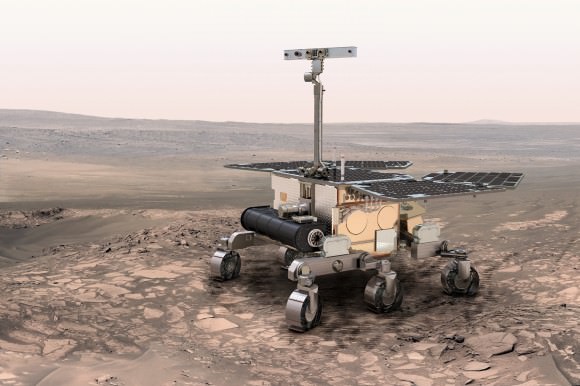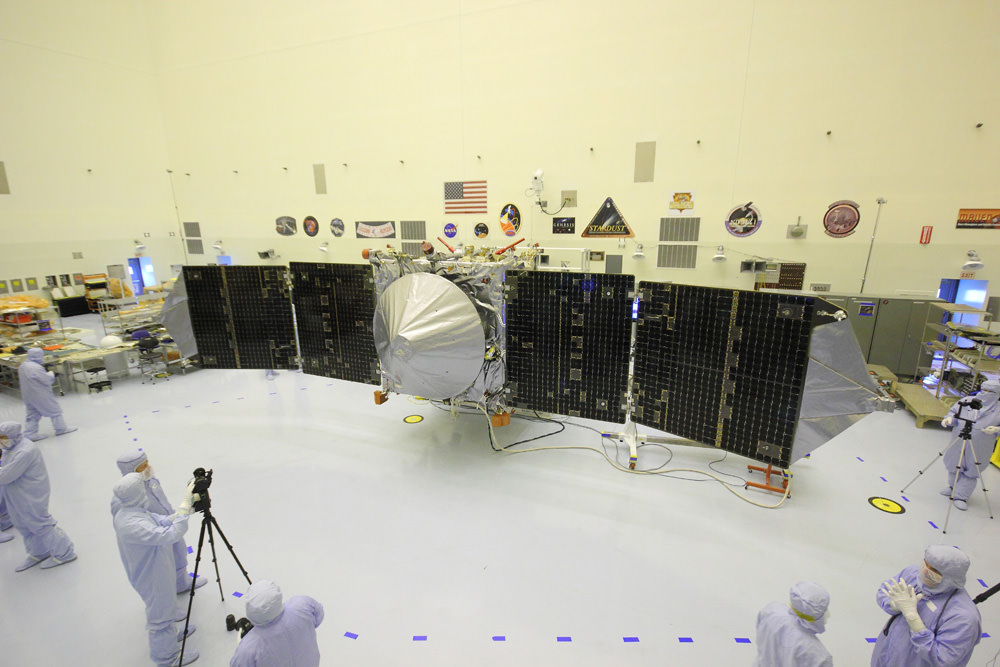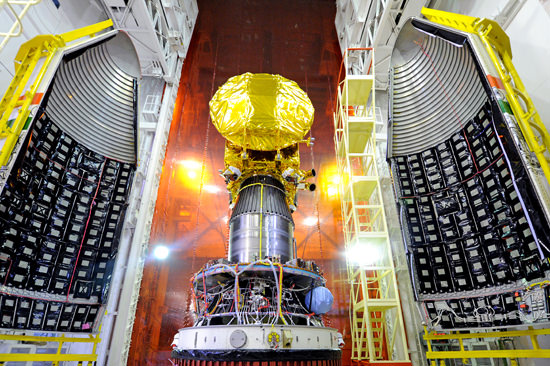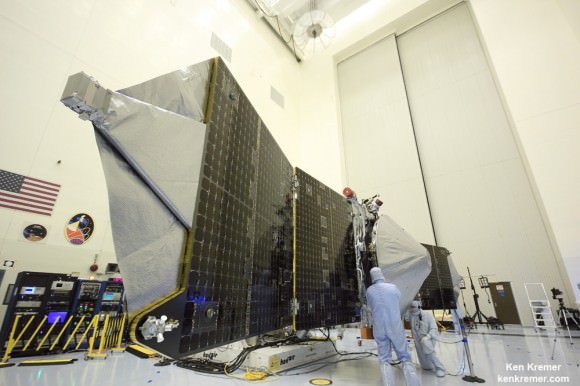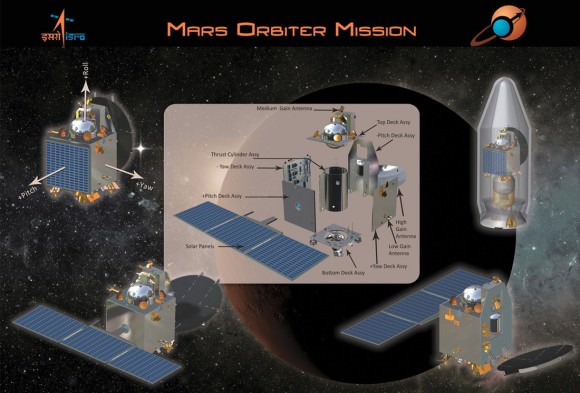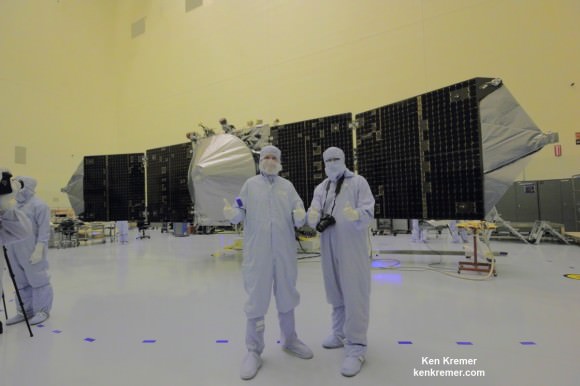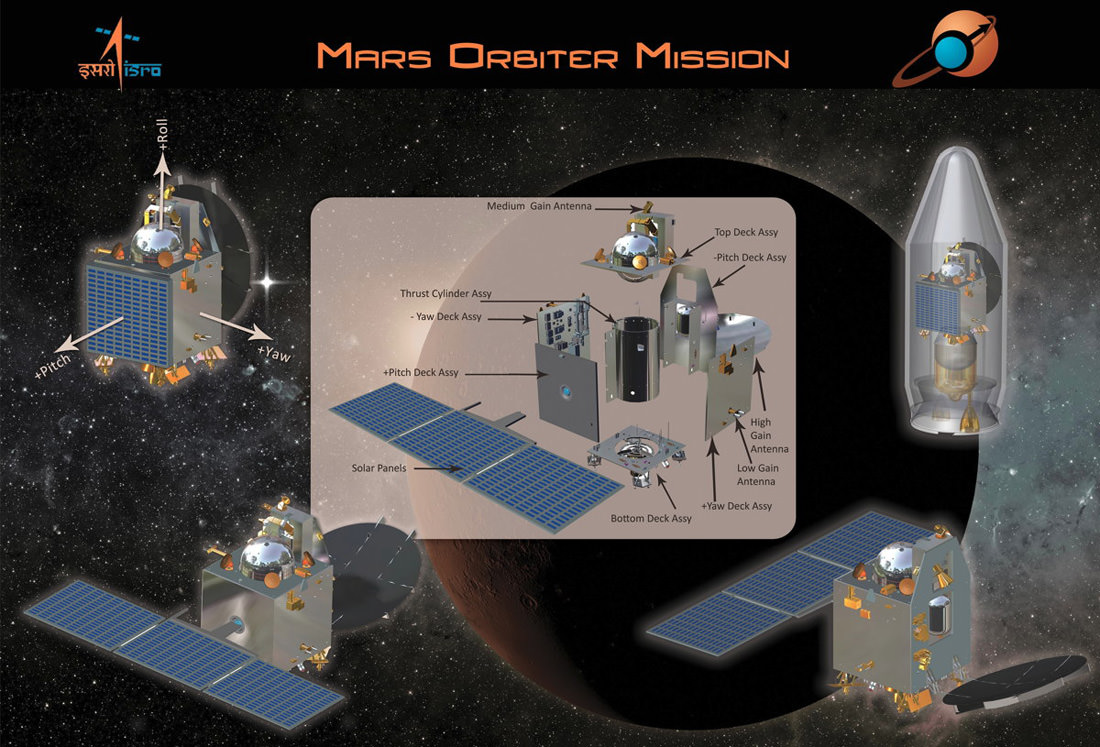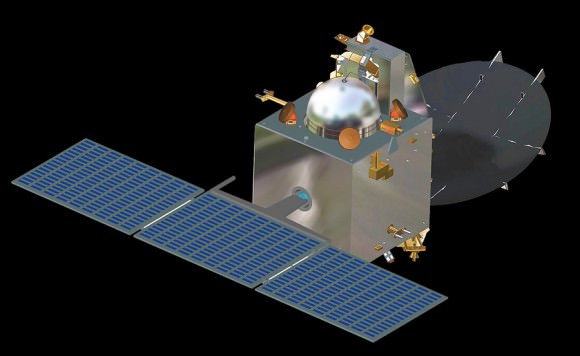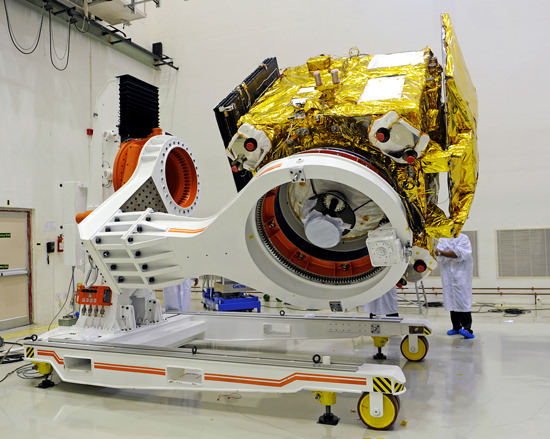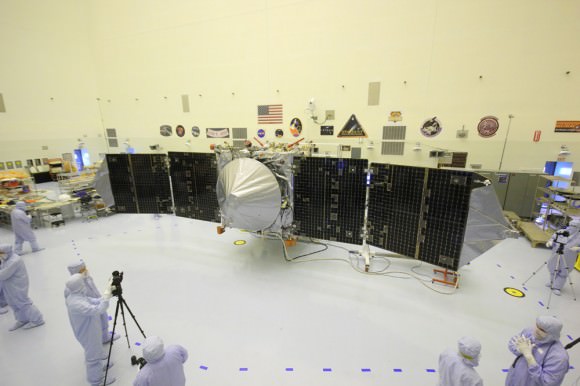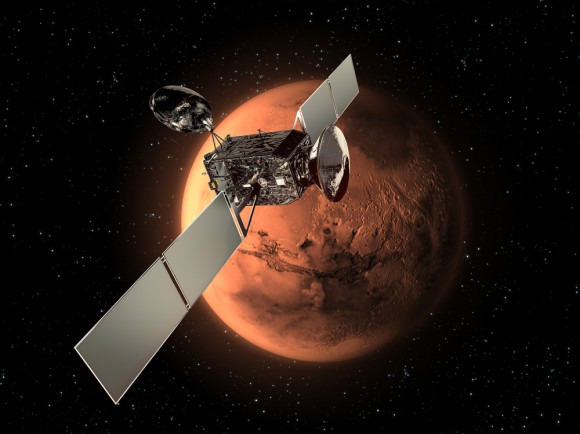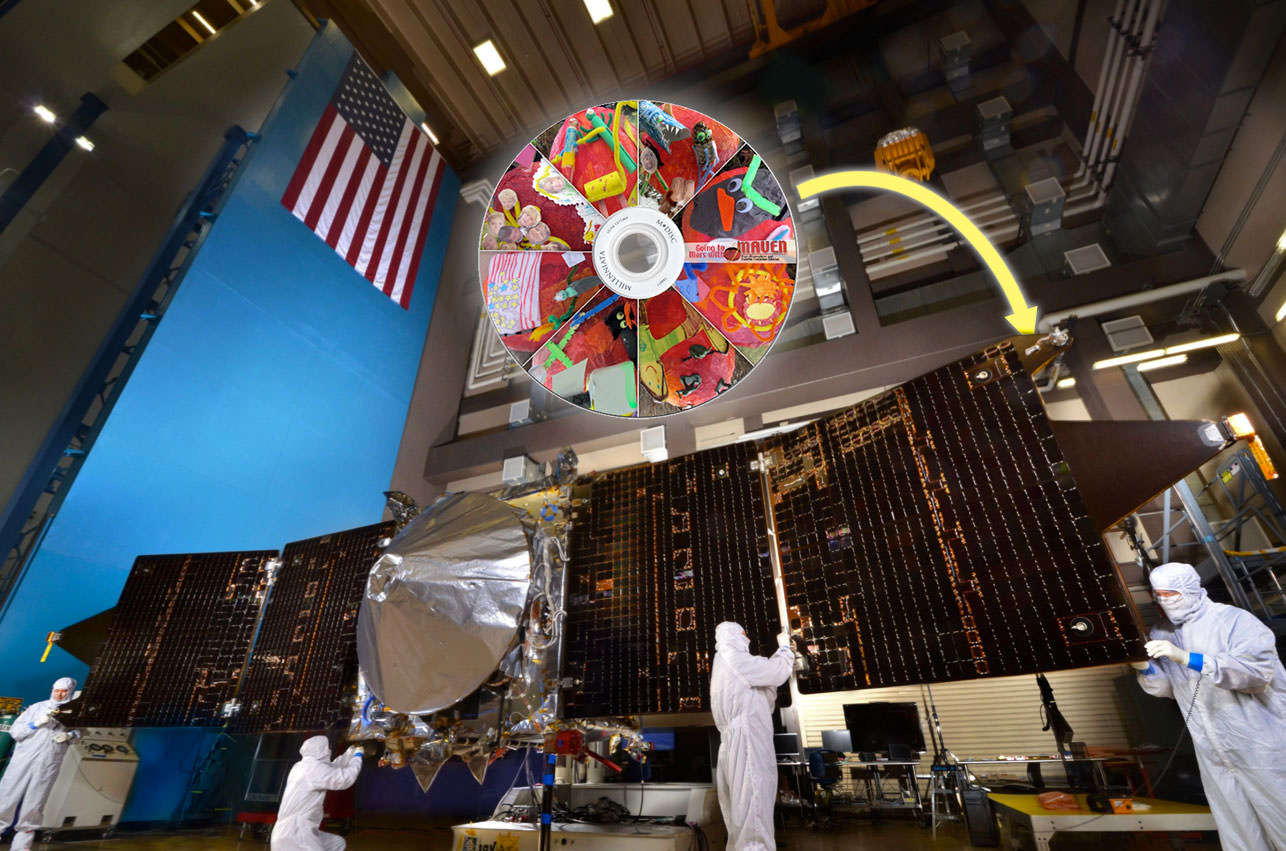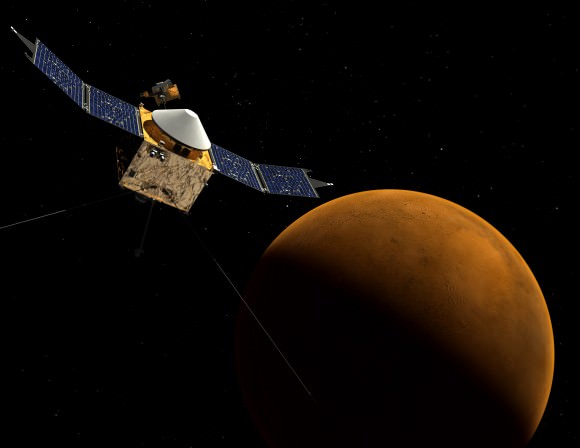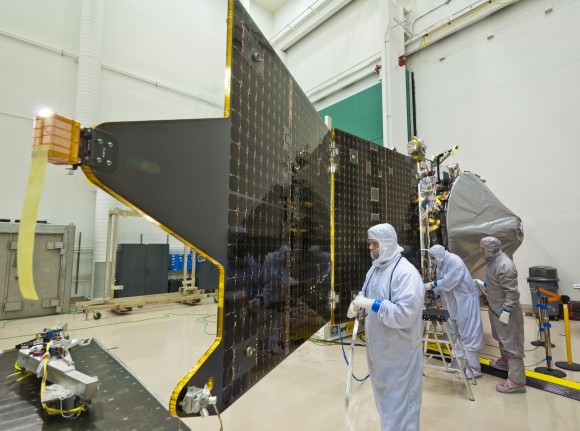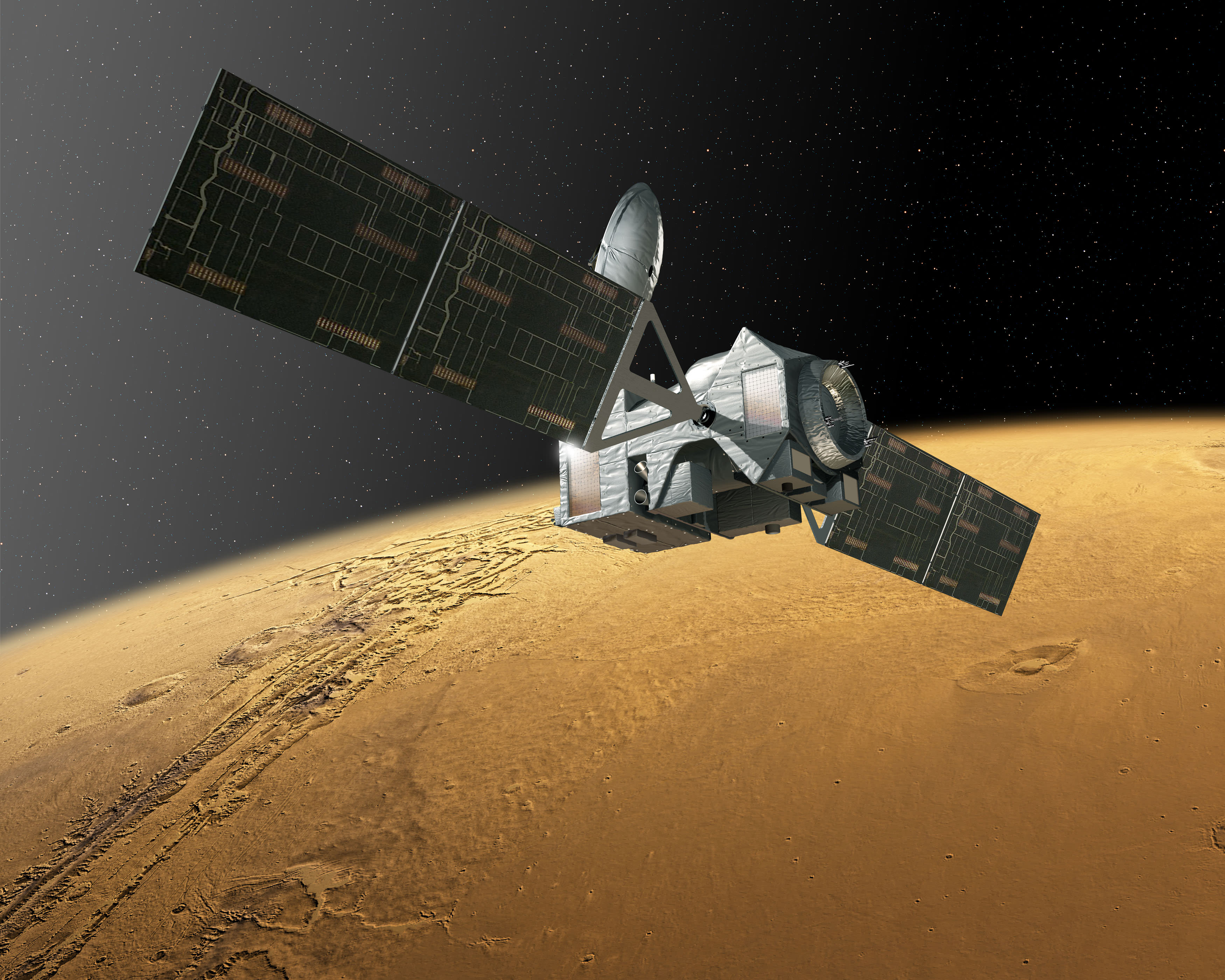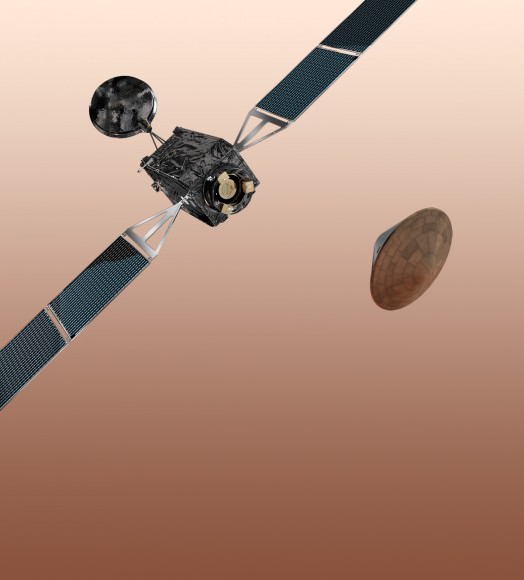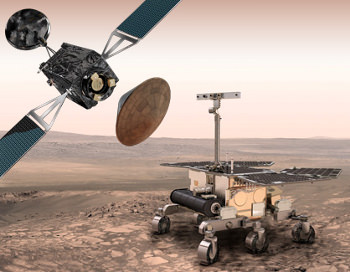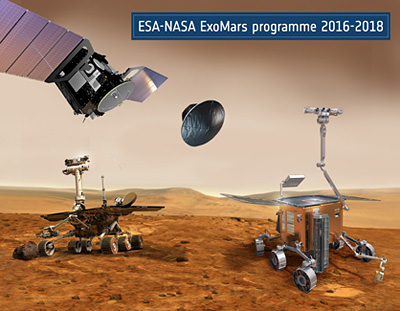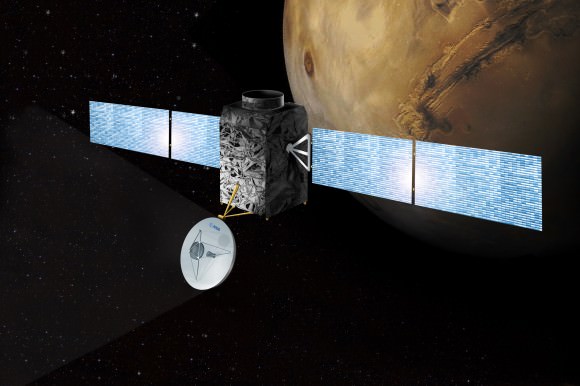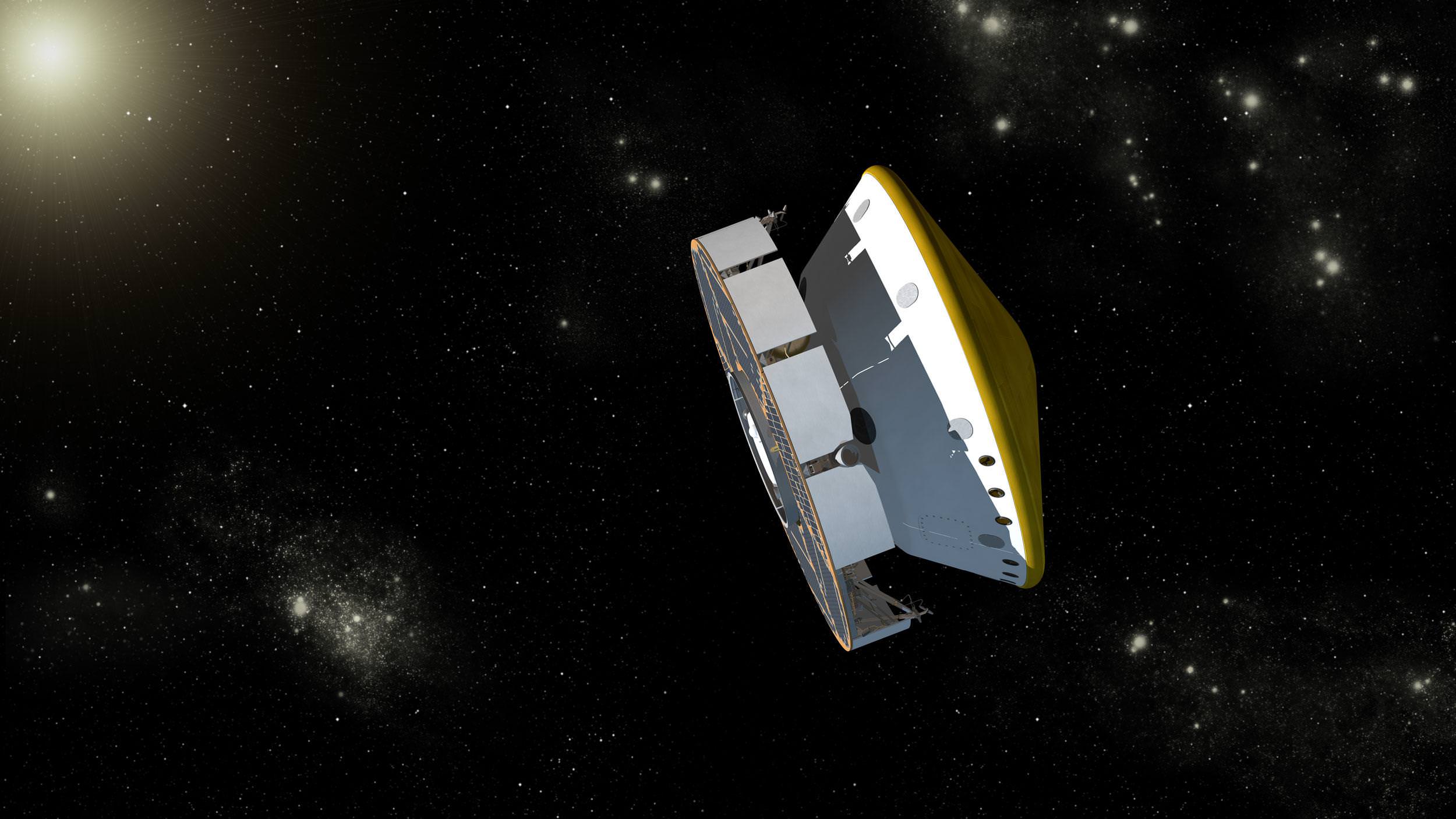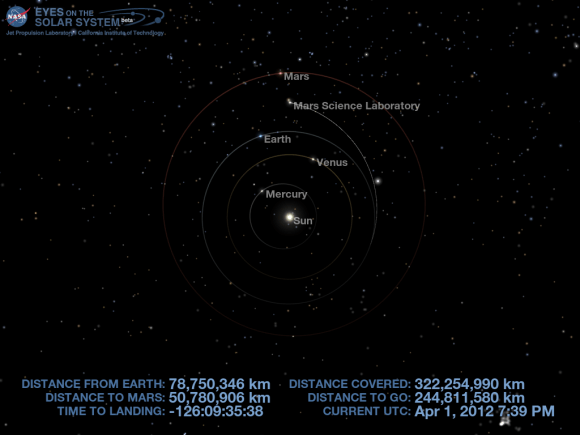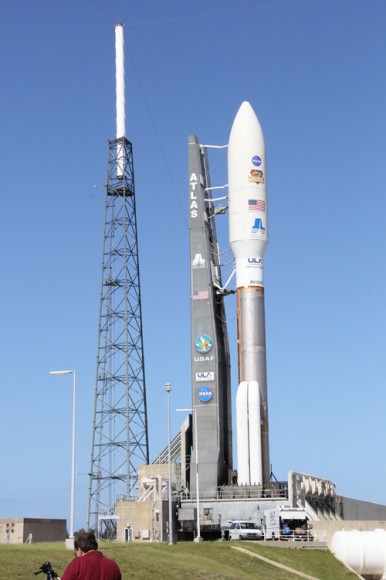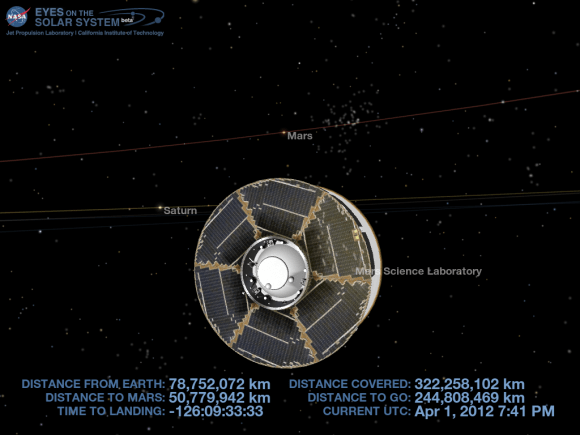The final chapter in the saga of a wayward Mars lander was finally revealed today, as an international team released images showing the Beagle-2 lander’s final resting place on Mars.
Flashback to Christmas Day, 2003. While most folks gathered ‘round the tree and opened presents, the UK and European Space Agency awaited a gift from space. The Beagle-2 Mars lander had been released from the European Space Agency’s Mars Express orbiter six days prior, and was coasting towards a perilous landing in Isidis Planitia and was set to phone home.
All was going according to plan, and then… silence.
It’s the worst part of any mission, waiting for a lander to call back and say that it’s safe and sound on the surface of another world. As the hours turned into days, anxious engineers used NASA’s Mars Odyssey spacecraft and the Lovell Telescope at Jodrell Bank to listen for the signal.
Beagle-2 was declared lost a few weeks later on February 6th, 2004.
But now, there’s a final twist to the tale to tell.
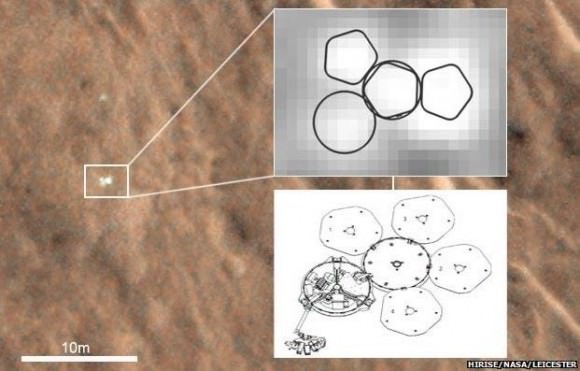
The UK Space Agency, working with ESA and NASA announced today that debris from the landing site had been identified and that indicates — contrary to suspicions — that Beagle-2 did indeed make it to the surface of the Red Planet intact. New images from the Mars Reconnaissance Orbiter released today suggest that not only did Beagle-2 land, but that its airbags did indeed deploy properly and that the dish-shaped 1-meter in diameter spacecraft partially unfolded pocket-watch style after it had bounced to a stop.
“We are very happy to learn that Beagle 2 touched down on Mars,” said ESA’s Director of Science and Robotic Exploration in a recent press release. “The dedication of the various teams in studying high-resolution images in order to find the lander is inspiring.”
So, what went wrong with Beagle-2?
At this point, no further speculation as to what caused the lander to fall silent has been forthcoming, but today’s revelation is sure to rewrite the final saga of Beagle-2.
“Not knowing what happened to Beagle-2 remained a nagging worry,” said ESA’s Mars Express project manager Rudolf Schmidt. “Understanding now that Beagle-2 made it all the way down to the surface is excellent news.”
Speculation swirled across the internet earlier this week as the UK Space Agency and ESA suggested that new information as to the fate of Beagle-2 was forthcoming, over 11 years after the incident. Back in 2004, it was suggested that Beagle-2 had encountered higher levels of dust in the Martian atmosphere than expected, and that this in turn resulted in a failure of the spacecraft’s parachutes. Presumably, the lander then failed to slow down sufficiently and crashed on the surface of Mars, the latest victim of the Great Galactic Ghoul who seems to love dining on human-built spacecraft bound for the Red Planet.
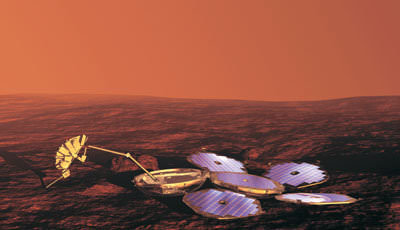
The loss of Beagle-2 wasn’t only a blow to the UK and ESA, but to its principal investigator Colin Pillinger as well. Pillinger was involved in the search for Beagle-2 in later years, and also played a part in the Rosetta mission to Comet 67P/Churyumov-Gerasimenko as well. Unfortunately, Pillinger passed away in May of last year from a brain hemorrhage. A portion of the western rim of Endeavour Crater currently being explored by Opportunity was named Pillinger Point in his honor.
Today’s announcement has triggered a wave of congratulations that the 11-year mystery has been solved. There have even been calls on Twitter and social media to rename the Beagle-2 site Pillinger Station.
“The history of of space exploration is marked by both success and failure,” Said Dr. David Parker, the Chief Executive of the UK Space Agency in a recent press release. “This finding makes the case that Beagle-2 was more of a success than we previously knew and undoubtedly an important step in Europe’s continuing exploration of Mars.”
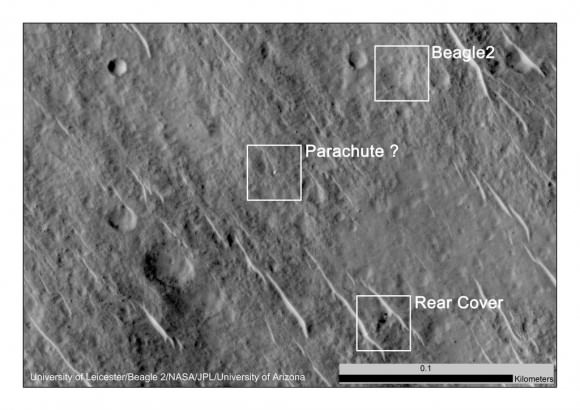
Beagle-2 is about 2 metres across unfurled, and came to rest within 5 kilometres of its target location.
There have been false announcements of the discovery of Beagle-2 before. Back in late 2005, a claim was made that the lander had been spotted by Mars Global Surveyor, though later searches came to naught.
“I can imagine the sense of closure that the Beagle-2 team must feel,” Said JPL’s MRO project scientist Richard Zurek in a recent press release. “MRO has helped find safe landing sites on Mars for the Curiosity and Phoenix missions and has searched for missing craft to learn what may have gone wrong. It’s an extremely difficult task.”
MRO entered orbit in March 2006 and carries a 0.5 metre in diameter HiRISE camera capable of resolving objects just 0.3 metres across on the surface of Mars. The European Space Agency’s Mars Express orbiter that carried Beagle 2 is also still in operation, along with NASA’s aging Mars Odyssey spacecraft. These were joined in orbit by MAVEN and India’s Mars Orbiter just last year.
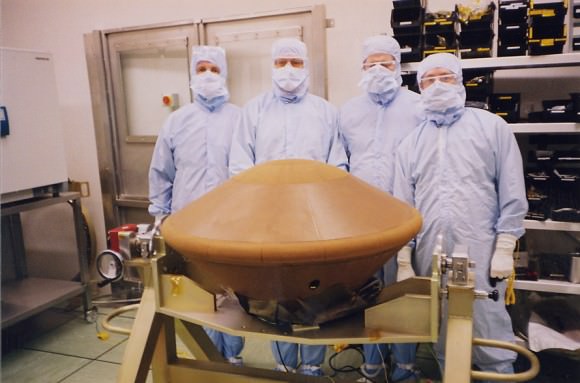
Of course, getting to Mars is tough, and landing is even harder. Mars has just enough atmosphere that you have to deal with it, but it’s so tenuous – 0.6% the surface pressure of Earth’s atmosphere at sea level – That it doesn’t provide a whole lot of usable drag.
To date, only NASA had successfully landed on Mars, and done it seven times – only the Mars Polar Lander failed back in 1999. The Russians fared much worse, with their most successful lander being Mars 3, which sent back only one blurry image before falling silent.
ESA and the Russian Federal Space Agency hope to amend that with the launch of the ExoMars mission next year, slated to land on Mars in 2018.
I remember waiting with millions of other space fans for word back from Beagle 2 on Christmas Day 2003. Think back to what your internet connection was like over 11 years ago, in an era before smart phones, Twitter and Facebook. We’d just come off of the spectacular 2003 Mars opposition season, which provided the orbital geometry ideal for launching a mission to the Red Planet. This window only comes around once every 26 months.
Though Beagle 2 was a stationary lander akin to the Viking and Mars Phoenix missions, it had a robotic arm and a clever battery of experiments, including ones designed to search for life. The signal it was supposed to use to call home was designed by the UK pop rock band Blur, a jingle that never came.
Alas, we’ll have to wait to see what the alien plains around Isidis Planitia actually look like, just 13 degrees north of the Martian equator. But hey, a lingering mystery of the modern age of planetary exploration was solved this week.
Still, we’re now left with a new dilemma. Does this mean we’ll have to write a sequel to our science fiction short story The Hunt for Beagle?
-Read free original science fiction from Dave Dickinson every Friday, including ongoing chapters from The Hunt for Beagle.


